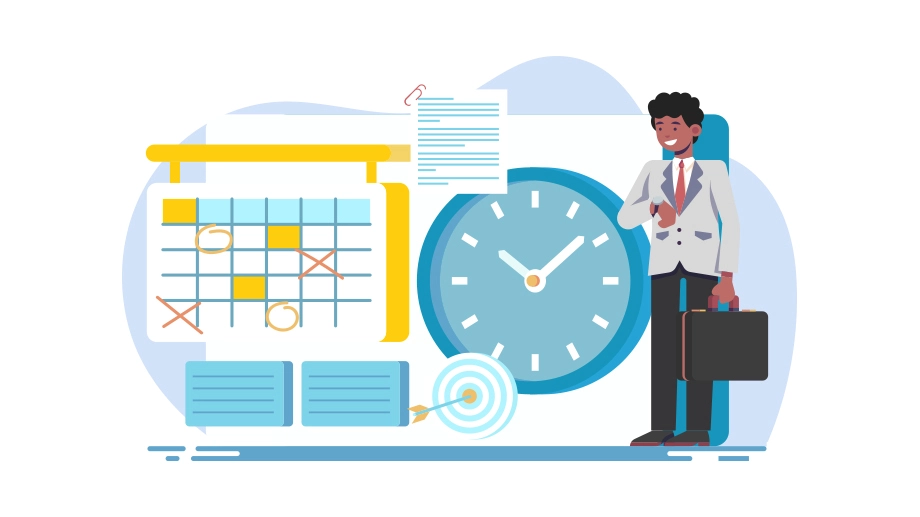As a business owner, it’s imperative that you monitor your time and expenses. But, a manual time tracking system is tiresome and frustrating. It takes a lot of time to collect data from various sources and then enter them manually. Is a manual time calculator for work at all worth it? A time clock software is the alternative that most field services business are opting for.
According to a survey, 50% of professionals who do not have automated systems said that manual data input and data adjustments are the most time consuming parts of the process.
With the recent availability of various time clocking software, most businesses are turning to them as a viable alternative to manual time tracking. In fact, businesses that do not adopt automation in time clocking are at risk of losing to the competition and going out of business.
Here are reasons why upgrading to such a system will be worth it in the end.
Manual Tracking
The ultimate goal of most of such manual tracking systems was to ascertain time taken by employees or workers and eventually relate that to costs/expenses incurred or productivity generated.
Manual tracking – Pros
Manual tracking has its benefits and it might still be the optimal way for some scenarios in 2022, which seemingly offer the following benefits:
- Low dependency on technology
- Lack of tech costs,
- Less need for upgradation
- Easier to initial implementation;
But these benefits are not really justifiable in a world that has moved ahead to automate or semi-automate its tracking procedures for years.
As we humans discovered the importance of TVM or Time Value of Money and grasped the power of scalability, efforts to automate followed with increasing pace.
Over the years, managers have recognized the flaws and limitations of manual time tracking and attendance; slowing down business growth.
Manual tracking – Cons
With technological advancement, manual systems have become a thing of the past due to performance limitations
- Higher costs due to inability to double check for discrepancies
- Overburdened HR department due to additional responsibilities of maintaining time & attendance sheets, manual attendance records and reports
- Incorrect reporting due to human errors
- Possibility of time theft from human subterfuge
- Loss of productivity due to the need to manually track, maintain update and check time clock records, eventually leading to increased costs
- Lack of usable data or siloed data due to manual record keeping that cannot be compiled and visualized without considerable human effort.
Despite all these flaws, firms have continued to use such methods due to various reasons and also due to the availability of below-par, ad-hoc solutions.
For example, manual excel timesheet used as an attendance sheet is a better method than paper-based documentation, but still requires a herculean level of clerical work if done manually on a large scale on a daily basis. Another limitation any such ad-hoc solution carries is an absolute absence of any real-time fixes, especially the ability to fix errors in past records/logs and all cascading impact of these past errors.
For instance, if the work hours are wrongly typed in the excel timesheet, there is no discrepancy identifying mechanism until an audit happens. The impact of such a singular unidentified error might not be limited to just one sheet or tab and might become the cause for other errors hampering all calculations.
The Challenges Without Time Clock Software
- The lack of a comprehensive software that is capable of time clocking and time calculations for the workplace.
- Error and fraud-prone losses in terms of money or lost time are very common and end up being extra costs or revenue loss for the firm.
- Teams, employees and management to working in a less than optimal way due to multiple uncertainties and lack of data
According to Market Research Future’s research, time tracking data revealed that the US economy loses 50 million hours in productivity per day because of unrecorded work activities.
Such has been an extent of this phenomenon for businesses that the EU made it a mandate to set up a time-tracking system, enabling the daily working time to be measured starting May 2019.
Adopting a Time Clock Software: The way forward
The transition from manual to automated time tracking will need both a change in mindset and organizational flexibility, but here are 5 Reasons why your business needs this upgrade (and to let go of legacy systems!)
- Increase ROI and boost productivity
Return on investment is a key metric for any firm, irrespective of its size or industry. Sales, expenses and profits, which are key factors in determining ROI are directly related to personnel performance.
An optimal and high quality automated employee tracking system not only solves the initial problems aforementioned, but delivers payroll savings by accurately tracking time spent on every job or task performed in the field.
In addition, an automated employee tracking system can identify non-performing employees by looking at the time they spend on jobs against benchmarks put in place by managers. It helps train employees as well as monitor their performance.
- Eliminating clerical errors
Errors can result from incorrect employee timesheet submissions, during manual entry of timesheets into payroll systems and during payroll calculations based on varying pay rates or pay codes.
With automated time tracking, errors in timesheets can be entirely eliminated. Employees do not need to spend their time tracking their job hours and can focus on the job at hand.
By integrating with payroll systems, time tracking data can be directly exported to the payroll system, eliminating manual entry that is both time consuming and inefficient. This process eliminates another source of error.
Many companies pay varying rates based on the job, equipment used or time. For example, shift differential rates and overtime rates are commonly used in payroll calculation. Being able to address these rates in your time tracking system can eliminate payroll calculation errors as well.
- Aids in taking data-driven decisions
According to HBR, Bad Data Costs the U.S. $3 Trillion Per Year, introducing an automated tracking system compels employees to not steal time or abscond duty since they know that their time & location is being tracked.
Such a system provides a dashboard for data visualization which enables managers to plan and save time normally spent on manually data entries and obtain accurate billable hours for payroll & accounting purposes.
In addition, top tracking & time clock software integrate with leading payroll systems enabling seamless combination, break-down and analysis of data to arrive at holistic data-driven decisions.
- Compliance
Companies gather astronomically large amounts of data which comes with the necessary legal obligations to how the data is stored and used in the form of compliance and data privacy reporting regulations.
A robust automated employee time tracking system offers a detailed view on user activity logging which can be used to identify and fix any compliance gaps quickly by identifying the location, time and person involved in the breach. The same can also be used for prevention by discovering any red-flag activities that could risk compliance breaches and acting accordingly.
- Real-time tracking
Using only historical data to fix any staff discrepancies is backward-looking and it involves a higher time & financial cost as well as higher risk of loss.
Real-time tracking eliminates the need to look at excel timesheets from the past to identify discrepancies such as late arrival, early departure by showing live status of all employees while also adding alerts as required.
Conclusion
There are many reasons to upgrade from a manual employee time tracking system to an automated one. Upgrading to an automated employee tracking system not only resolves issues born out of outdated tracking systems, it also leads to other benefits.
There are many reasons you may want to upgrade to an automated time tracking system, such as increased employee accountability, ensuring correct employees check in & check out, and automatic calculations of time worked on a specific project.
The right time tracking system can also help you to cut labor costs. If you’re looking for a way to streamline your business operations, upgrading your time tracking system is a great place to start.



